Alright – so today we’ve got the honor of introducing you to Regina Allen. We think you’ll enjoy our conversation, we’ve shared it below.
Regina, thanks for taking the time to share your stories with us today We’d love to hear about when you first realized that you wanted to pursue a creative path professionally.
When I was 7 years old, I remember watching a girl in my class named Julie draw in pencil the profile of a farmer with a piece of hay in his mouth and wearing a hat. She was good. We all gathered around her and watched in wonder. I knew right then, I wanted to do that. It felt like watching her do magic. I can recall as a child having very intense desires to create something- anything! It was the 1970’s, and I often played outside by myself. I would gather pine needles, mud, leaves, and sticks and create things from it. Hands-on art skills came pretty naturally to me. I was always good at any art or craft we did in school. I have fond memories of making a carved apple core head in 5th grade, which we then dried and attached to a doll body we constructed. We also did a simple weaving, and I wove an image of snow-capped mountains. My piece was chosen to be displayed in a regional student show, and I began to think maybe I was kind of good at this. My mom signed me up for an oil painting class when I was about 11 years old with an artist who was locally famous for cute painted wooden key chains and purses. I remember this artist had boxes of greeting cards that we would choose from, and then we’d each copy the image on that card onto our canvas and paint it. It sounds rudimentary, but it was actually a really great way to learn how to control the paint.
For three summers while in high school I attended an art camp at a state university. A couple of the college professors taught special summer sessions of drawing and painting for high school students, and these classes completely blew my mind. Those experiences cemented my decision to study art and to become a professional artist. The first summer, I was so stimulated by what I was learning that I would wake up at 6am, not my usual schedule, because I couldn’t wait to get to the drawing class, which began at 9am. The lead professor was a kind and inspirational teacher who had an enormous impact on my art path. Those summers at the art camp, I first saw the possibilities of studying art and becoming an artist. A creative life opened up ahead of me.
I went on to study studio art and literature in college, and then to earn a Masters of Fine Arts in painting. In graduate school we often discussed what makes a “successful” artist (or one might say a “professional” artist). I’ve thought about this often, especially since now I’m also an art professor, and I talk about this with my own students. When I assign my students to find and write about a “professional” artist they admire, I define that as “an artist with a sustained studio practice”. Ideally, a professional artist earns money from their art, but realistically, most artists cannot support themselves solely from their art sales. A sustained studio practice, in my mind, demonstrates a commitment to thought and creativity and craft, however that may be interpreted or manifested. Sustained practice may mean selfishly taking the time and energy to nurture and develop one’s ideas. It certainly will require working through doubt and disappointment and failures. It’s a very challenging path, and sometimes it’s discouraging. But it’s also incredibly intellectually and spiritually fulfilling, and I can’t imagine a life where I wasn’t on that path.
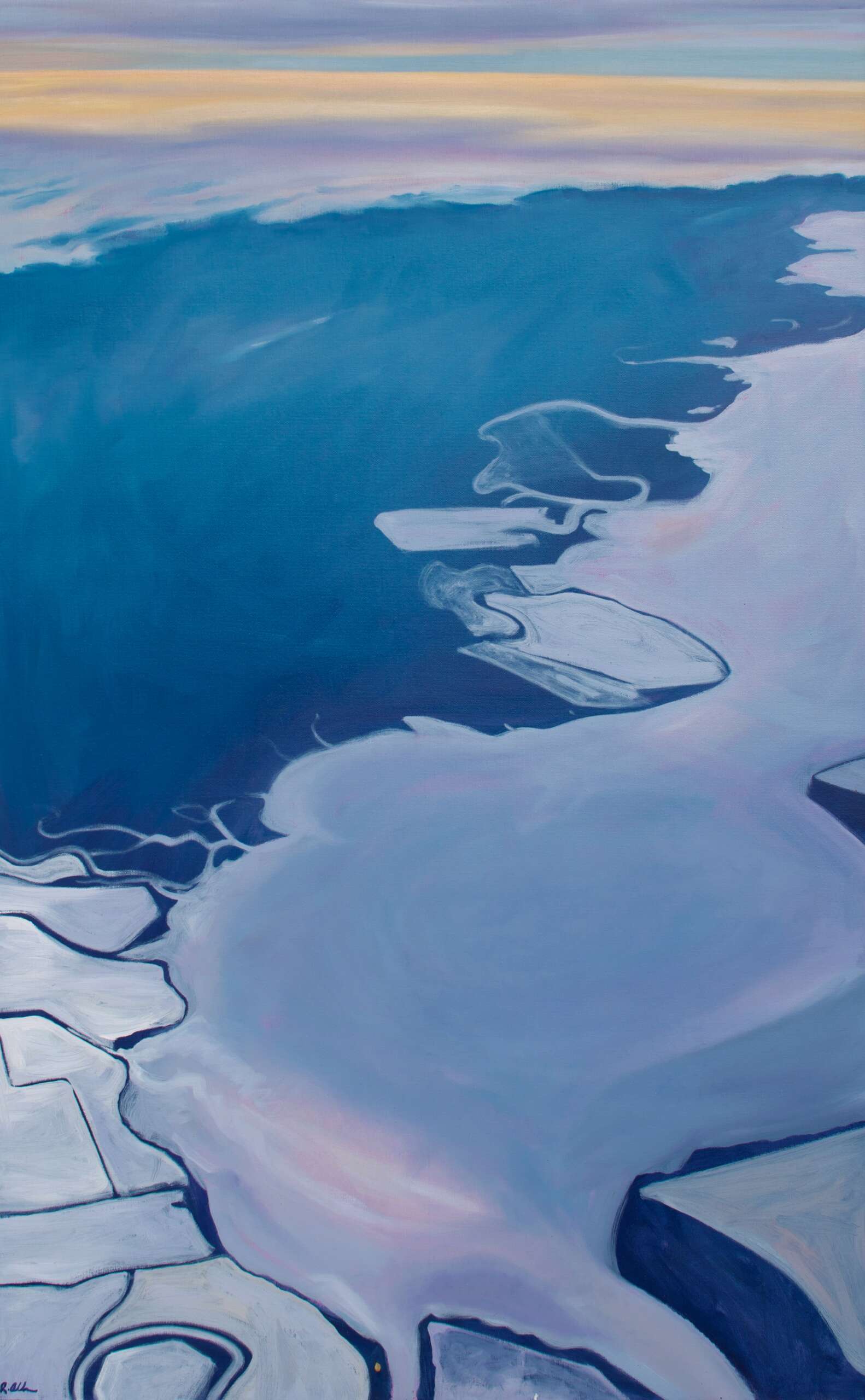
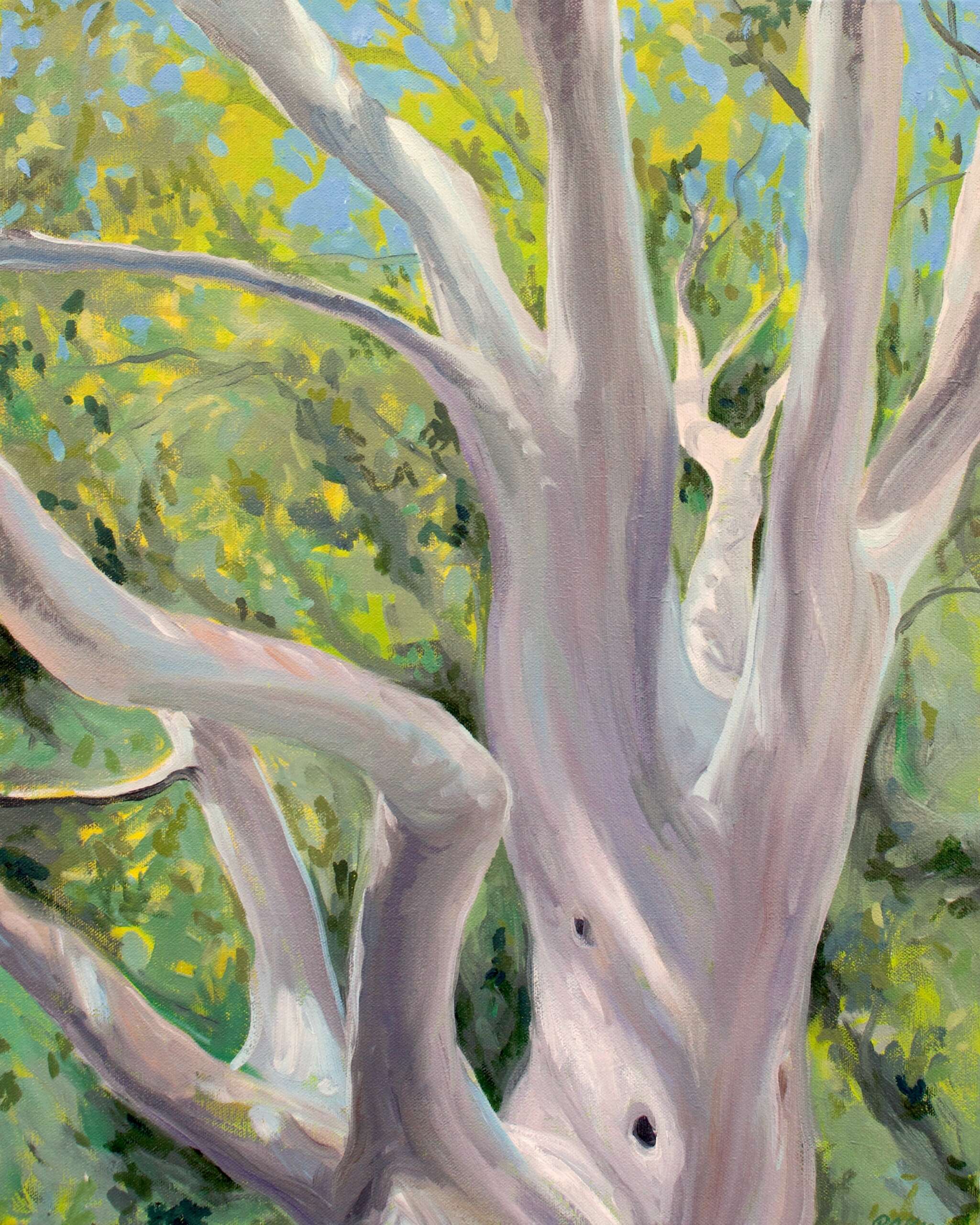
Regina, before we move on to more of these sorts of questions, can you take some time to bring our readers up to speed on you and what you do?
I excited to announce that I recently learned that one of my landscape oil paintings, “Lake Travis”, will be purchased through the City of Austin Art in Public Places Program to be permanently displayed in the Austin Public Library Manchaca branch. This painting was inspired by an aerial photo I received from a friend who’s son was taking flying lessons. The aerial image of Lake Travis in Austin, TX shows the pale bands of sandy colored shoreline which vary greatly depending on the amount of rainfall. Over the last several years, Austin has struggled with drought conditions. Together with immense city growth and aging infrastructure this has led to many challenges with water management. It struck me that this view of Lake Travis from above showed so much about the vulnerability of our water system, and at the same time, it is both beautiful and inspiring.
My art reflects my concerns about climate change, the environment, and the health of our planet. These landscapes celebrate the tenacity of nature in the face of human interference and development. The work grounds itself in the physicality of the brushstrokes, paper, and mark and originates from my personal experience and observation of nature. I use the sensuousness of paint and the expressiveness of color and shape to examine the sublime beauty of Earth. More and more I find this examination becoming a spiritual endeavor.
In some of my works I use an aerial point-of-view, and I’m inspired by the astronauts’ descriptions of the overview effect. This is a cognitive shift that results from viewing Earth from space leading to an appreciation and perception of beauty, overwhelming emotion, and an increased sense of connection to other people and to the Earth as a whole. With these paintings I’m exploring landscape from a less traditional perspective using images that I’ve gathered from airplane rides, mountain hikes, and satellite imagery. From above one can admire the abstractions of intricate patterns and colors in the land, borders typically dissolve, differences dissipate. However, the jarring impact of human activity on our planet is also evident.
I also use a more personal and intimate point-of-view in some of my paintings, embracing a ground view that peeks through groupings of trees and branches or a close-up view that considers colors, textures, and light on rocks, water, and foliage. This immerses the viewer in the landscape, evoking a moment of deeper connection with nature. Observation of the natural world becomes a quiet action for the environment and a meditation on the endurance of our planet. Despite my fears and apprehensions about our home, my art offers a wisp of hope, like a prayer or a wish.
These are the ideas I examine in my studio practice. Sometimes these musings lead me to surprising topics, and I find myself exploring theories of consciousness, records of mythology, new science about the biology of trees, or information about newly discovered archaeological sites from pre-history, etc.. I let my curiosity lead me to whatever catches my interest and see what might trickle into my art making.
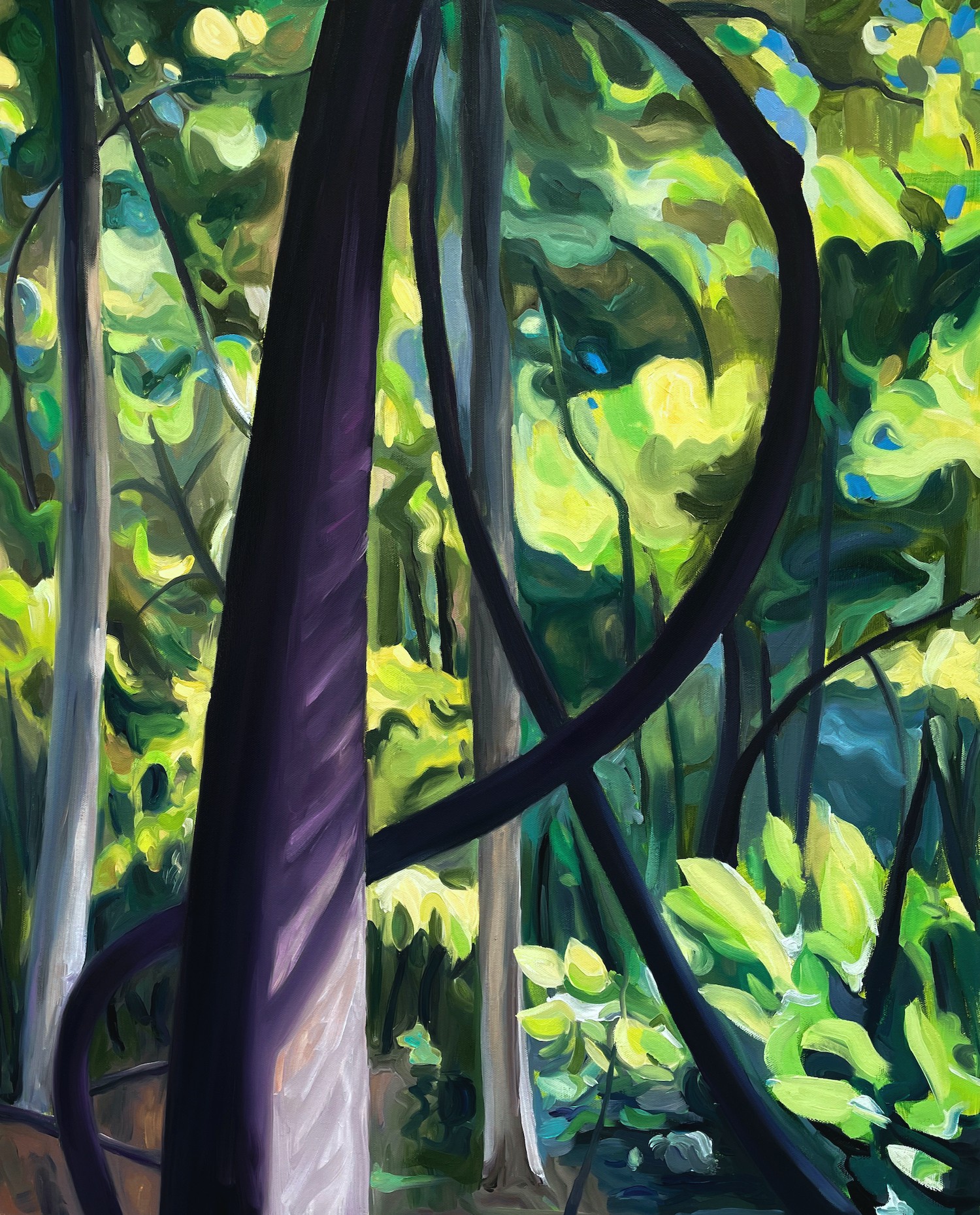

What can society do to ensure an environment that’s helpful to artists and creatives?
I think that what artists need most in order to thrive is “affordability”. We need affordable housing, studio spaces, performance places, supplies, and affordable childcare, just to name a few. It is incredibly difficult to afford to be an artist. You will almost certainly need to have a side hustle/job in order to support your art habit. If you choose to have a family, it gets exponentially more difficult because necessarily, you will have limited time, energy, and money to devote to your art. Creating affordability requires that society- and in particular the movers and shakers in society- embrace the importance of art-making in our culture. This means accepting that artists in our society serve an important role aside from their revenue generating abilities. Education is moving in a direction to emphasize only those disciplines that lead to job creation and income generation. This is a mistake in my opinion. Artists explore aspects of our world in ways that differ from scientists, or accountants, or politicians, or business people. They make connections that are unique and contribute to a richness in our lives. Artists may problem solve in new and unexpected ways. I believe that society can best support artists and creativity by prioritizing civic programs that will support affordability in the arts, and by ensuring that the arts are taught in schools and are a part of the basic education for every student. Value in education isn’t just tied to specific job outcomes. This is too narrow of a goal. Society as a whole benefits from the fostering of creativity no matter what job a student ends up pursuing.
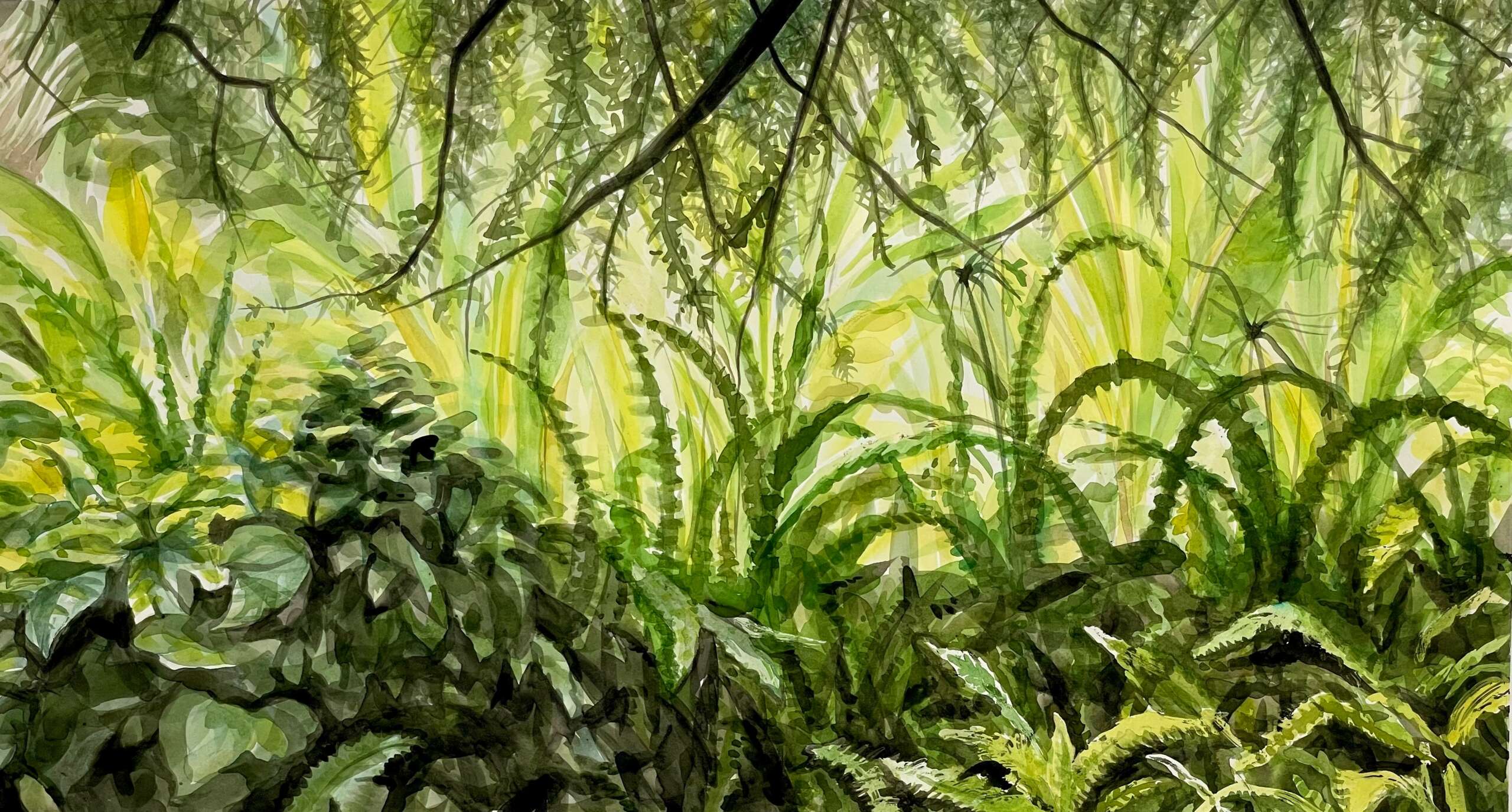
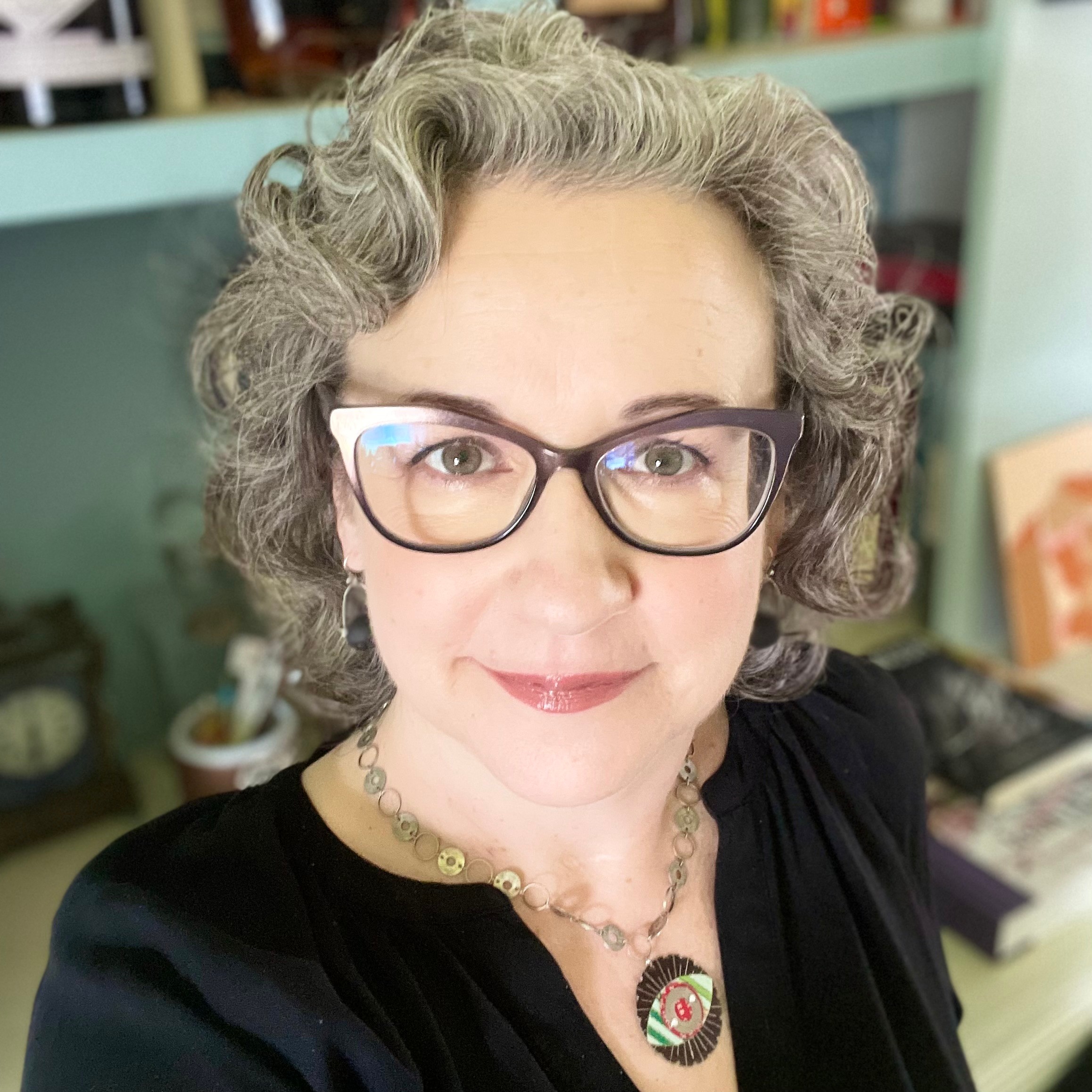
Are there any books, videos or other content that you feel have meaningfully impacted your thinking?
There are many books that have influenced me. I’ll start with books on the business of art. I recommend that anyone trying to be a professional artist either take a course, read some books, or watch some videos about the logistics of that endeavor. I read The Artist’s Guide by Jackie Battenfield, but there are many similar books out there. I also took the course Artist Inc, a small business course for artists which was at the time being organized by the city of Austin. These books and courses offer practical advice for artists on bookkeeping, websites, sales, taxes, marketing, etc.. But sometimes I need help with my motivation to make art, and there are many books out there geared towards stoking that motivation. The Creative Act by Rick Rubin is a popular one right now. For those artists with some executive management issues, I recommend Make Your Art No Matter What by Beth Pickens. And then there is the classic, The Artist’s Way by Julia Cameron, sometimes viewed as a bit hokey by some artists, but I have to say that whenever I’ve hit a stalemate in my own creative practice, I return to this book. This book works best if you put aside all judgement and do the exercises whole-heartedly. The morning pages exercise in particular has become an amazing ritual of sorts for me. And finally, one of the biggest impacts on my work is reading books about the artists I admire. For years I’m embarrassed to admit I mostly just looked at the pictures of their art. But finally I began reading the information that the art historians, biographers, and art critics have written about those artists, and it added context that took me places I never expected in my own art. My current big influences include Landscape Painting Now From Pop Abstraction to New Romanticism (Schwabsky), From the Forest to the Sea Emily Carr in British Columbia (Milroy and Dejardin), David Hockney A Bigger Picture, and The Other Side: A Study in Women in Art and the Spirit World by Jennifer Higgie.
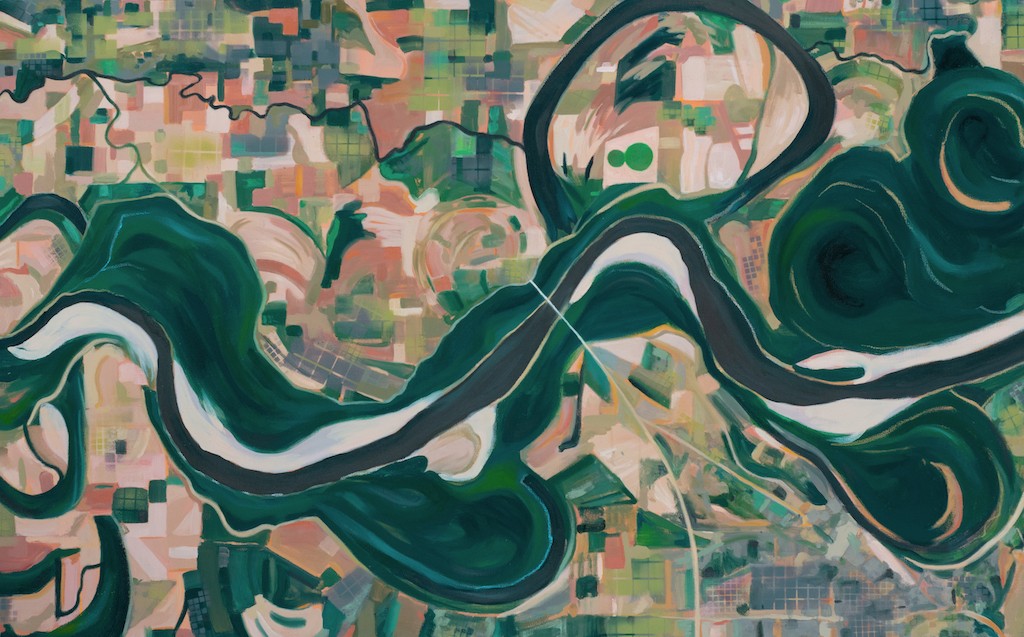

Contact Info:
- Website: www.reginaallen.com
- Instagram: regina allen_art
- Facebook: reginaallenartist
- Linkedin: regina allen-artist
- Other: https://www.saatchiart.com/reginaallen
Image Credits
Regina Allen


